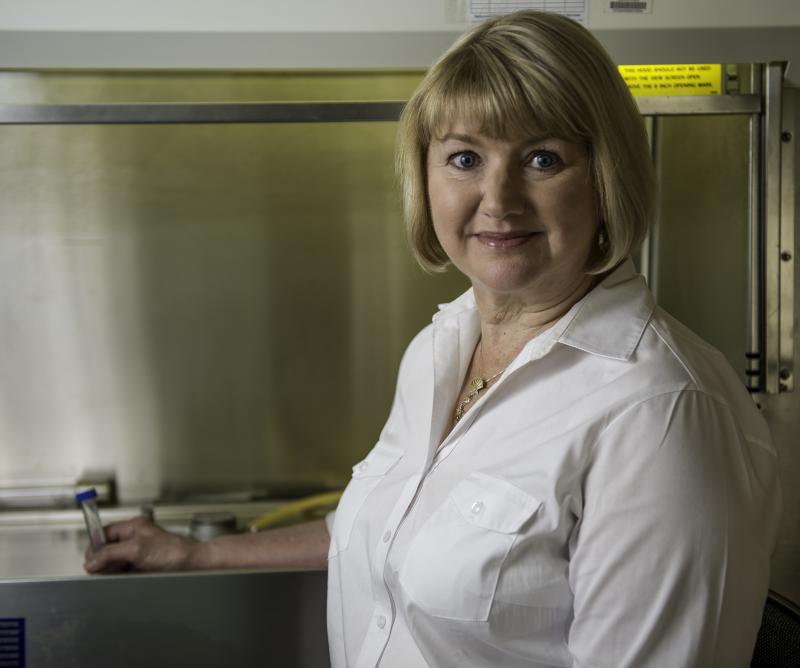Diane Kapareiko is a microbiologist for the Northeast Fisheries Science Center’s Aquaculture Sustainability Branch. Her home base is at our Milford Lab in Milford, Connecticut.
Can you tell us a little about yourself—where you grew up, how you got interested in science, where you went to college?
I am a lifelong Connecticut shoreline native. As a small child, my immediate and extended family all lived near Bridgeport, Connecticut. Seaside Park was within several blocks of where we lived. It has a beautiful stretch of beach on Long Island Sound. We had a lot of family gatherings at that park. One of my earliest memories is frolicking along the shore and watching seahorses swimming in the water. They were quite abundant then and I was amazed by them! They were so cute and didn’t look like normal fish. I loved the way they swam and curled their tails around each other so I took a couple home as “pets.” I tried my best to keep them alive but I had no notion of how. I was only four years old at the time. Looking back, I’d say that was my first foray into marine science.
Staying close to my shoreline roots, I attended the University of Bridgeport. I had an affinity for science so I majored in biology. I wasn’t sure what direction my degree would lead me but I knew I wanted to work in the field of biology. At the time, my university partnered with various federal and private facilities, offering “co-op semesters.” These semesters gave students real-life, hands-on learning experiences in their field. In 1980 it led me to our Science Center’s Milford Lab. While aboard the lab’s research vessel Shang Wheeler, I learned how to draw blood from winter flounder to see how it was affected by pollution. That experience solidified my passion for marine science. When I graduated with a bachelor’s degree in biology, the Milford Lab hired me as a biological technician. I have more than 40 years of federal service at the Milford Lab, more recently as a microbiologist.
Why did you want to become a scientist?
I became a scientist because I had a passion and curiosity about nature. I’ve found it very rewarding to be a member of a team of scientists working together towards a greater common goal—to preserve and sustain our natural resources. Wet and dirty field work? I’m there!
What advice do you have for the next generation of women scientists about a career in fisheries and/or marine science?
To future women scientists, I highly recommend taking advantage of opportunities to gain hands-on experience through internships or volunteer work. Being book smart is one thing, but hands-on experience is invaluable and a great way to get your feet wet—literally! You’ll learn the latest and greatest technologies, cooperation, and how to be part of a team whose scientists and technicians all work together towards a common goal.
Be focused yet flexible. Learn as many varied skills as you can to become a well-rounded scientist. Understand that even the best scientists experience challenges and failures. Never let these challenges make you question your passion for marine science. Use them as learning experiences to move you towards your successes.
Lastly, if you realize that marine science is your passion and you land your dream job, you will never work a day in your life. Doing something that excites you and makes you enjoy going to work every day is valuable. A happy scientist is a productive and successful scientist. There may be long days where you’re in the lab for 12 hours and others where you’re out in the field getting wet or dirty, but you do it because you love it!
For more information, please contact Heather Soulen.




